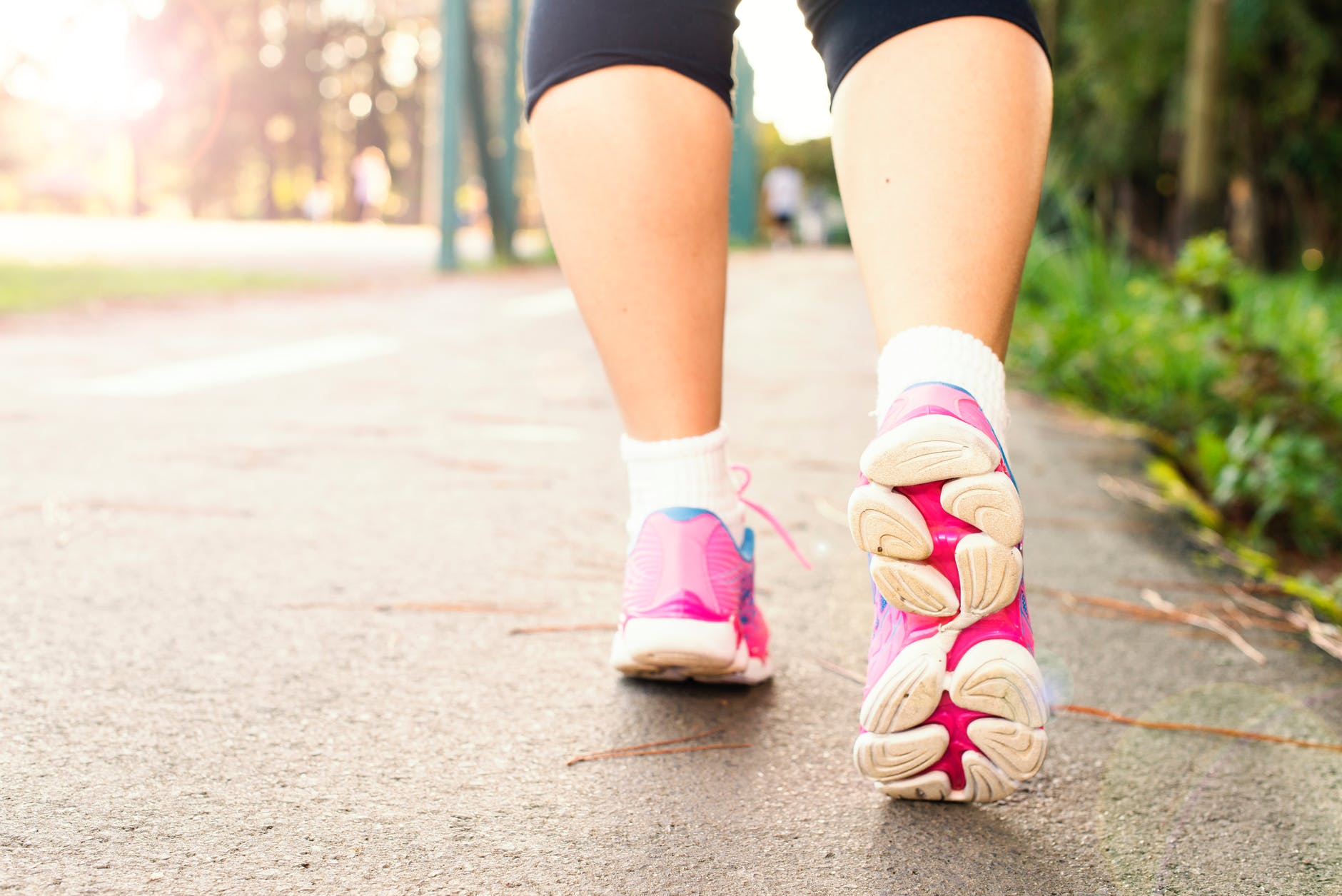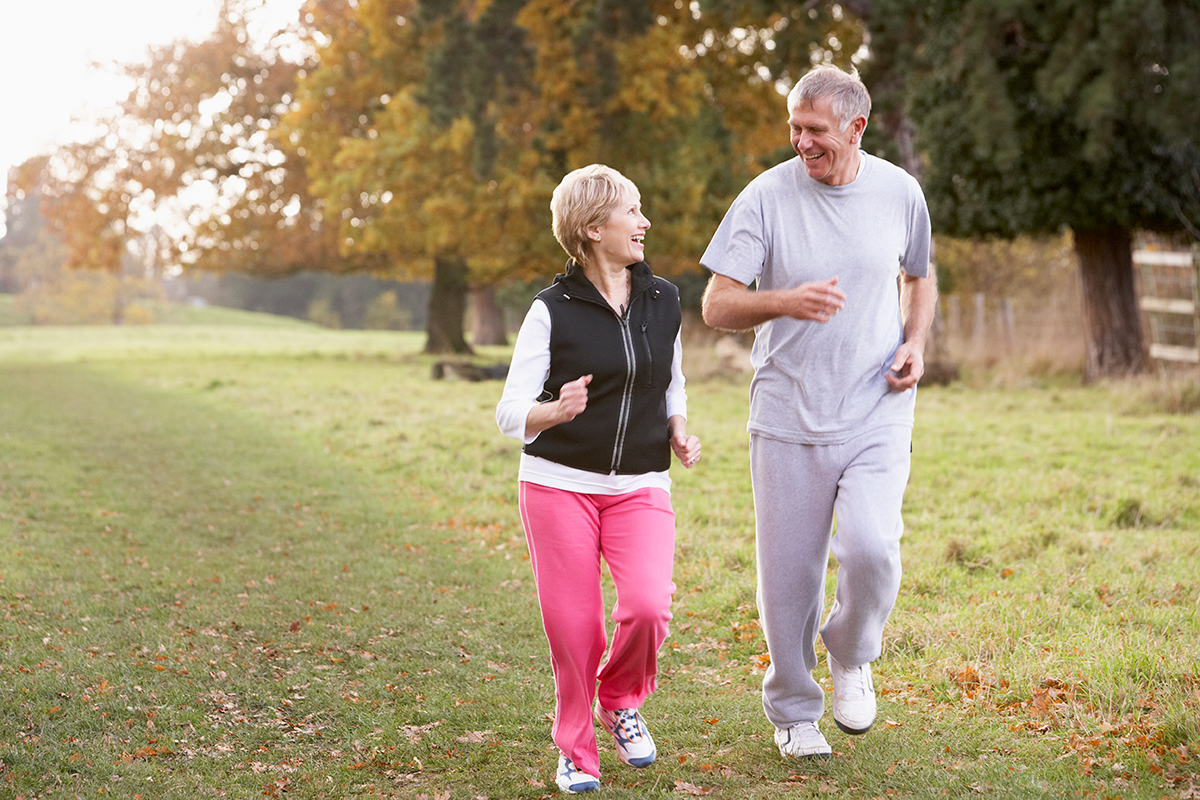Keep Walking: Benefits of Walking as Aerobic Exercise
Aerobic exercise (also known as cardio) is physical exercise of low to high intensity that depends primarily on the aerobic energy-generating process. “Aerobic” means “relating to, involving, or requiring free oxygen”, and refers to the use of oxygen to adequately meet energy demands during exercise via aerobic metabolism.
Generally, light-to-moderate intensity activities that are sufficiently supported by aerobic metabolism can be performed for extended periods of time. What is generally called aerobic exercise might be better termed “solely aerobic”, because it is designed to be low-intensity enough so that all carbohydrates are aerobically turned into energy. The bulk of the energy in this type of exercise is due to mitochondria ATP production which relies on oxygen for the metabolism of carbs, proteins and fats for energy.

Health Benefits
Among the recognized health benefits of doing regular aerobic exercise are:
- Strengthening the muscles involved in respiration, to facilitate the flow of air in and out of the lungs
- Strengthening and enlarging the heart muscle, to improve its pumping efficiency and reduce the resting heart rate, known as aerobic conditioning
- Improving circulation efficiency and reducing blood pressure
- Increasing the total number of red blood cells in the body, facilitating transport of oxygen
- Improving mental health, including reducing stress and lowering the incidence of depression, as well as increased cognitive capacity
- Reducing the risk for diabetes (One meta-analysis has shown, from multiple conducted studies, that aerobic exercise does help lower Hb A levels for type 2 diabetics)
- Reducing the risk of death due to cardiovascular problems
How to Walk Properly and Correctly to Keep Walking
Starting from the foundation of our body, our feet, we need to keep in consideration and balancing our weight through a tripod that includes our heel, big toe and small toe during our gait circle.
Gait is categorized into two phases: stance and swing. The stance phase occurs when the foot is on the ground. In young to middle-aged adults, the stance phase makes up 60% of the gait cycle. The remaining 40% of the cycle is spent in the swing phase where the foot is off the ground and being propelled forward.
The more we keep repeating this cycle in the correct form the more we keep producing the right pattern for our body to keep walking/exercising, planting the benefits for our longevity.
Additionally, we need to consider the alignment of the rest of the body. Thorax and Pelvis should be in the same line allowing breathing to go in a constant rhythm with the heart and lungs. Usage of the diaphragm and full expansion of respiratory muscles will allow extra oxygen intake, leading to better performance and eventually weight loss.
Body Performance Benefits
In addition to the health benefits of aerobic exercise, there are numerous performance benefits:
- Increasing storage of energy molecules such as fats and carbohydrates within the muscles, allowing for increased endurance
- Neovascularization of the muscle sarcomeres to increase blood flow through the muscles
- Increasing speed at which aerobic metabolism is activated within muscles, allowing a greater portion of energy for intense exercise to be generated aerobically
- Improving the ability of muscles to use fats during exercise, preserving intramuscular glycogen
- Enhancing the speed at which muscles recover from high-intensity exercise
Neurobiological Effects:
- Improvement in brain structural connections
- Increase in gray matter density
- New neuron growth
- Improvement in cognitive function (cognitive control and various forms of memory)
- Improvement or maintenance of mental health

Walking is widely recommended for its health benefits. According to a recent U.S. Surgeon General report on physical activity and health in America, more than half of the U.S. population does not participate regularly in any type of exercise. That physical inactivity can lead to poor health. It is time to start making better choices and better habits. Let’s start walking!
- Walking can help you attain that trim figure you’ve been “dieting” to have. It allows you to burn off fat without losing muscle and without depriving your body of the essential nutrients it needs. And it can help tone your muscles and shape up your legs.
- Before you begin walking for fitness with freestyle walking programs, you need to consider a few preliminaries, including your age and your overall health. It’s pretty easy to figure out that walking doesn’t require much in the way of equipment. One of the only, and by far the most important items that you’ll need, is a pair of comfortable walking shoes. If you don’t take time and care in selecting your walking shoes, you may be in for some serious discomfort.
- You also need to learn how to measure your heart rate and listen to your body, so you’ll know where to begin and how hard you need to work to increase your fitness and health. You may have heard similar claims made for other aerobic exercises, but consider this: The only exercise that will do you any good is the exercise you do, and walking is easy, as easy as putting one foot in front of the other.
Dimitrios Triantafillopoulos is a Master Personal Trainer, supporting people, athletes and other trainers to make them feel better with their body and themselves. He holds a Bachelor’s degree in Kinesiology and Sports Science, a Master’s Degree in Nutrition and Sport Fitness, as well as a Medical Fitness Specialty. Dimitrios has attended numerous seminars in Performance Training and Specialized Nutrition, and is also a Certified Instructor in Vibration (Power Plate) Acceleration Training and Electro – Stimulation Training. He is currently a Fitness Manager at Crunch Fitness in New York City.
